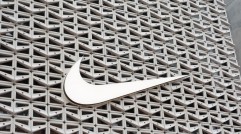International Space Station Facts: 3D Printer Now Headed to ISS
3D Printing and its capabilities have been catapulted to the next level.
Announced this week by NASA and Made in Space (a 4-year-old 3D printing company), the pair will be launching the first ever 3D printer made specifically for space.
The International Space Station (ISS) is expected to receive the Additive Manufacturing (or 3D printing) model as early as September of this year. Made in Space contends that their 3D printer could be like "Star Trek's replicators." The 3D Printer venture is one of many other planned NASA projects that have been disclosed.
Just like in "Star Trek," the replicators could make clothes, food and mechanical parts, and this 3D printer is based off of that principle. Additive manufacturing is very innovative and new. The Latin Post has been reporting on 3D printers and their capabilities since April of this year.
A 3D printer can build an object layer by layer using printing technology, or via lasers. As we have learned, some additive manufacturing can discharge plastic, metals, ceramic powder and other materials. Companies, such as Staples, are already making 3D printing available to the public, and the Intel company has provided blueprints for people to build a 3D robot.
Made in Space's 3D Printer is purposely built to handle zero-gravity, and it will build objects layer by layer out of polymers and other materials, The Christian Science Monitor reported. This printer will potentially build spare parts, space tools and a mini-satellite for research. Having this kind of capability saves on shipping costs and time; rather than the ISS crew waiting for parts, they could replicate their own.
When Star Trek technology impacts reality, you just have to share it with one of science fiction's preeminent originators. Grant Lowery, the marketing and communication manager for Made In Space, said the company brought Rod Roddenberry, son of "Star Trek" creator Gene Roddenberry to see their printer. According to Lowery, all Roddenberry had to say was "Tea. Earl Grey. Hot," The Christian Science Monitor reported.
The ISS space bound 3D printer is among 12 research projects for NASA's Flight Opportunities Program, which includes Virgin Galactic's SpaceShip Two rocket plane flights, NBC News reported. Other experiments include identifying "the electromagnetic field environment inside a spacecraft; studying zero-gravity fluid; and firing projectiles into simulated moon dust or an asteroid material to then views its behavioral reaction."
3D printing has made it.
Subscribe to Latin Post!
Sign up for our free newsletter for the Latest coverage!
* This is a contributed article and this content does not necessarily represent the views of latinpost.com














